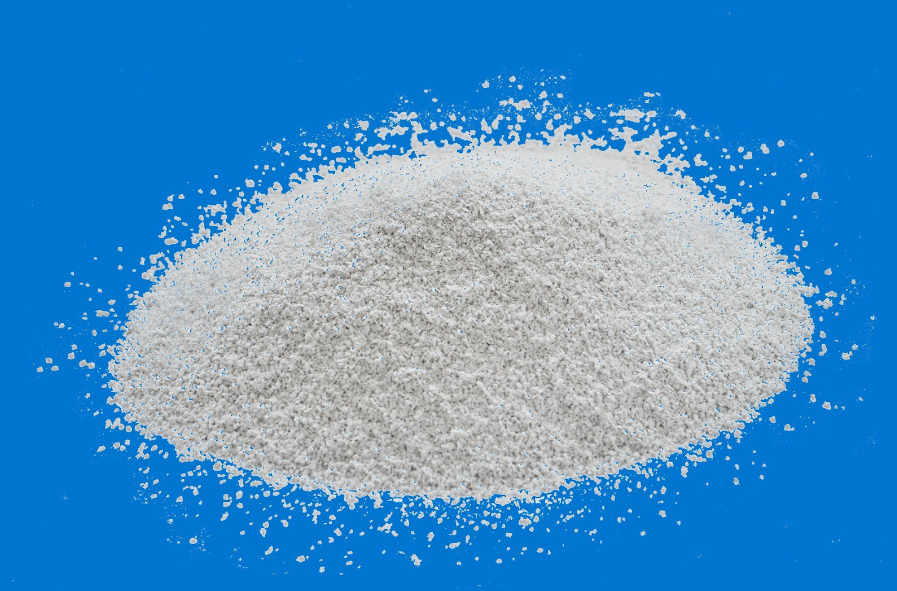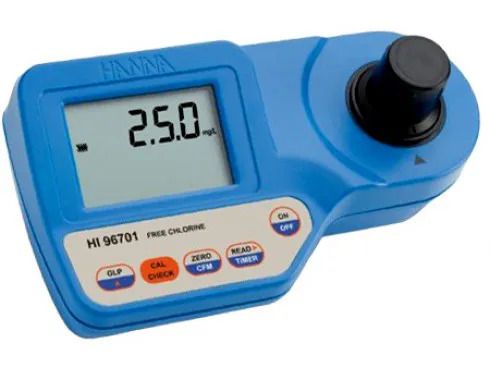Chlorine Meter MULTI
What is Chlorine? Why is a residual chlorine meter necessary
Using a chlorine meter to check the chlorine concentration in water is extremely important. The reason is that chlorine is an essential chemical, widely applied in water disinfection and bleaching. A chlorine meter becomes useful as this chemical is also used in various fields such as in medicine for wound disinfection and anesthesia, in chemical technology for the production of paints and solvents, and in aquaculture to disinfect ponds and eliminate bacteria.

However, if the chlorine concentration in water exceeds the permissible limit, it will affect human health and aquatic organisms. Therefore, a chlorine meter is an essential device for checking and monitoring residual chlorine levels in water environments.
What is chlorine and some common current applications
Chlorine (also known as Cl) is a strong oxidizing agent, often used as a disinfectant to eliminate disease-causing microorganisms, and supports in the processes of sterilization and bleaching.
In daily life, chlorine is a familiar chemical in swimming pool water treatment, used for disinfecting domestic water sources, and in the treatment of wastewater from industrial areas and urban zones.
In the medical field, chlorine is used to disinfect wounds and is a component in creating the anesthetic compound chloroform (CHCl₃).
In industry, chlorine plays the role of an additive in paint formulation, solvents, foaming agents, insecticides, and antifreeze chemicals.
Chlorine is also used in aquaculture water treatment to kill bacteria, viruses, algae, and planktonic organisms present in water.
In addition, chlorine is used as a bleaching chemical for cotton before the dyeing process in textile manufacturing.
Reasons why a chlorine meter must be used
A chlorine meter is a necessary device in both daily life and industrial production because although chlorine plays an important role, excessive use can lead to serious consequences.

The composition of chlorine includes Cl₂, HOCl, and OCl, which remain in water and can cause anoxic conditions, affecting the health of shrimp, fish, and aquatic species. If the chlorine level in water exceeds 0.01ml/l, it will produce toxins that can kill marine life or farmed aquatic species. When it reaches 0.1mg/KL, chlorine can eliminate planktonic organisms, and at a concentration of 0.37mg/L, it can result in mass fish deaths.
Water contaminated with chlorine can lead to acute or chronic poisoning reactions depending on exposure time and concentration. Common symptoms may include damage to the respiratory system, digestive system, impaired excretory functions, disturbances in liver and kidney activities, resulting in conditions such as low blood pressure, blood sugar disorders, localized blood clotting, skin burns, and blindness.
In the textile industry, excessive chlorine use can cause the breakdown of cotton fiber structure, negatively affecting fabric quality and reducing production efficiency.
Therefore, to ensure public health and minimize economic losses in production, the use of a chlorine meter to accurately control chemical concentrations is indispensable.
Conclusion:
If you are looking to purchase a chlorine meter for checking swimming pool water, aquaculture water, or domestic water treatment, just check out EMIN. They offer a full range of equipment from well-known brands such as Hanna, Hach, EXTECH, LaMotte, Horiba, Milwaukee, Palintest… making it easy to compare and choose. Whatever specific model you need, EMIN provides quick and clear support.
-
-
-
-
-
-
-
-
-
-
-
-
-
-
-
-
-
-
-
-
-
-
-
-